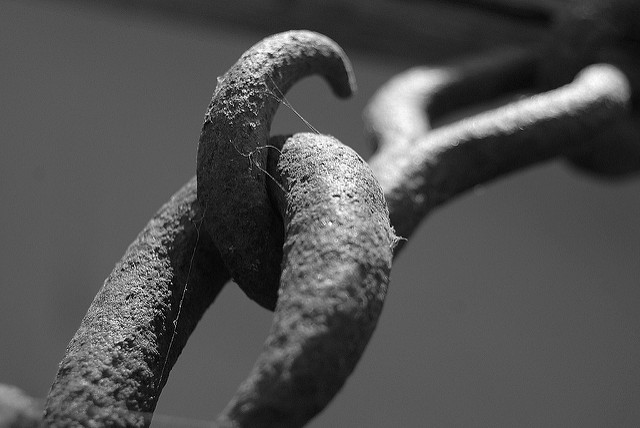High five to the Buddha who had it right all along: all our struggles stem from attachment.
We might be attached to certain people, objects, or maybe even a place or two. But what do the rest of our personal problems have to do with attachment? The Buddha must be kidding us.
Unfortunately—or may I say that fortunately—he wasn’t. Every problem, serious or silly, comes from our discontented grasping at something outside of ourselves.
The words “attachment” or “grasping” might sound vicious to some people. But, since I’ll be using them often, I’d like to clarify that the meaning of attachment is less rough than it sounds. Attachments are those things we look to for happiness, security, and protection.
In other words, we see a part of ourselves in something or someone and try not to let it go. We’d be terrified by the idea of losing a leg, an arm, or maybe even cutting off a few inches of our hair. The reason why is because they’re a part of us, literally. The same applies to our attachments. The fear of losing them is a reaction to the fact that they have transformed into integral parts of who we are and have become a comfort zone.
Attachments and comfort zones are two different things, but they’re connected. Whether we know it or not, a comfort zone is an attachment, and an attachment is a comfort zone. It’s challenging to discern the danger they pose to our lives when we’re in the middle of them. Only when we break free from an attachment or manage to leave our comfort zone do we perceive how much it was weighing us down.
The tricky thing about attachments and comfort zones is that we often don’t realize when or how we began to be involved in them in the first place. The only thing we begin to sense as we get attached is our discontentment and dissatisfaction. That’s when we question our unhealthy track.
Now going back to the fact that the Buddha wasn’t kidding us, I’ll give a few examples of how attachment might indeed be the root cause of our psychological issues.
Anger. When we’re angry, we’re attached to our false sense of self, the “I.” Whatever attacks it—a person, a situation, a debate—causes us to become enraged.
Worry. When we’re worried, we’re attached to the outcome that we want.
Unacceptance. When we don’t accept the loss of someone or something—or any outcome life throws at us—we’re attached to what we believe should be present in our lives.
Pain. When we’re constantly discontented, we could become attached to the idea of pain and a victim mentality.
Pleasure. When we always seek something pleasurable—a person, drugs, alcohol, food—we’re attached to the emotions they stir in us.
Aggressiveness. When we attack others as a defense to our own ideologies, dogmas, or ideas, we’re attached to the identity they give us.
Annoyance. When we’re annoyed with someone, we’re attached to how we want them to be.
The list goes on and on. In no time, those attachments become a comfort zone which we can’t easily escape. What’s the cure for attachment? Doesn’t detachment strip us from our most human qualities?
Thankfully, when the Buddha spoke of the dangers of attachment, he also gave the cure for it. There’s an outstanding line in the “Little Buddha” movie that goes like this:
“If the string is too tight, it will snap. If it is too loose, it will not play.”
In other words, the Middle Way is our shield against clinging to comfort zones. The problem is not what we receive from the outside; rather, it’s how we deal with what we receive. Detachment doesn’t mean indifference; it means awareness. When an emotion arises in the body, we shouldn’t blindly feed it, but we shouldn’t try to suppress it either.
When you feel attacked, pause for a moment and create space between you and your upcoming anger. Transcend the furious reaction into aware action.
When you’re worried, observe the scenarios that your mind creates and understand that they stem from the fear of uncertainty.
When you don’t accept loss, pause and reflect on the lessons that you have gained and on the fleeting nature of things.
Although we can’t directly spot where attachment begins, we can tell at least that it starts when awareness is absent. How do we shed light again on what’s been long in the dark? By being mindful of our actions, reactions, and speech.
For instance, during my trip a few weeks back, I abruptly found myself stuck in a rut. How could I tell? I noticed that I went down to the same cafés, same restaurants, same corner to watch the sunset, and the same hiking trail out of habit and not out of delight. However, when I began asking myself what I felt like doing and why, I automatically got myself out of my comfort zone and found myself in new places.
To be constantly aware seems like a tough task, but what’s truly tough is waking up from the delusions in our heads. At least awareness keeps us anchored in the present moment, which is far safer than the hazardous trails that our minds sometimes create.
~
~
~
Author: Elyane Youssef
Image: Flickr/Bob Ramsey
Editor: Travis May
Copy & Social Editor: Yoli Ramazzina









Read 0 comments and reply